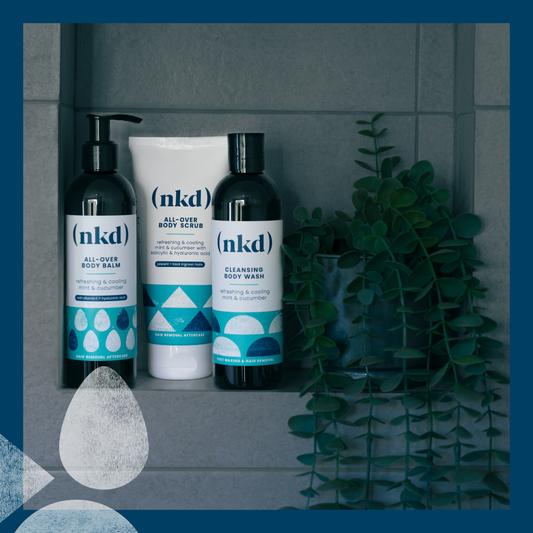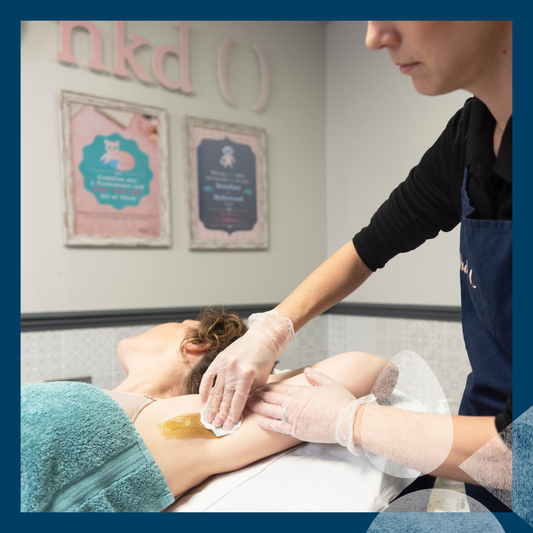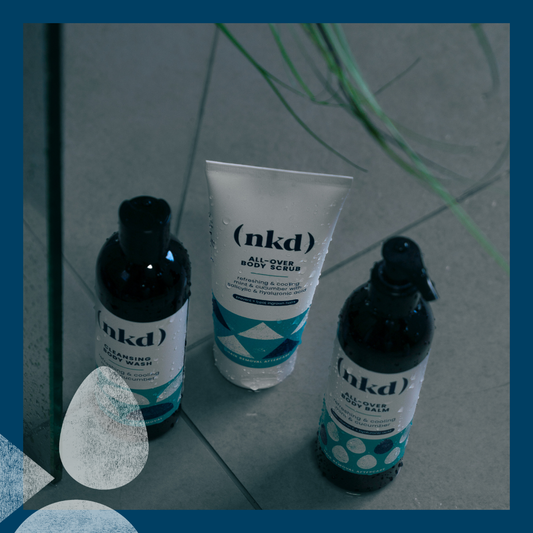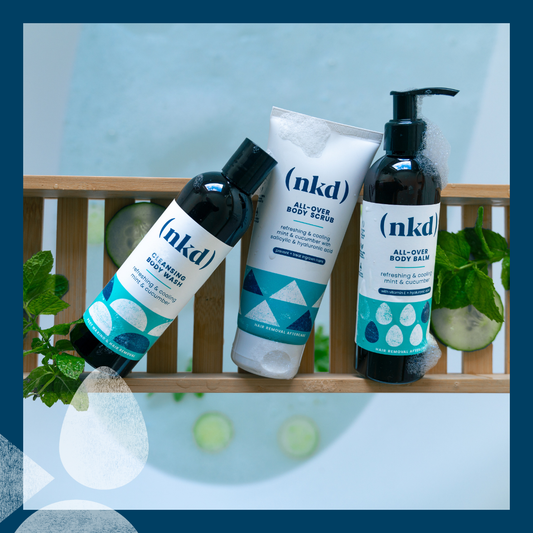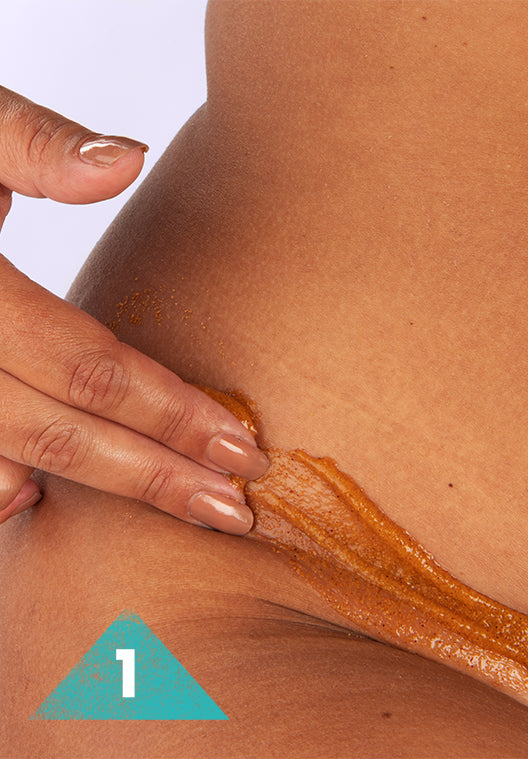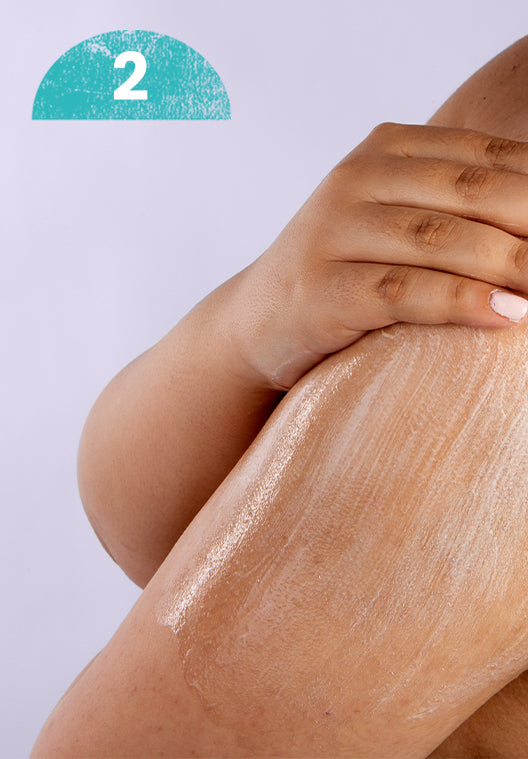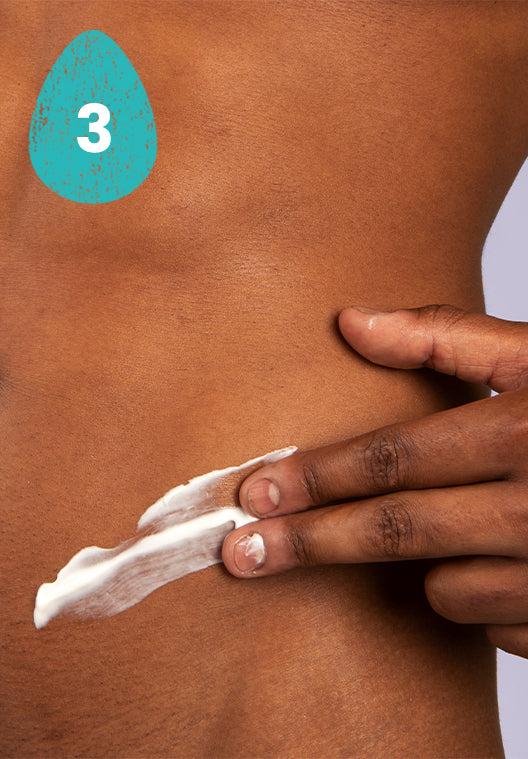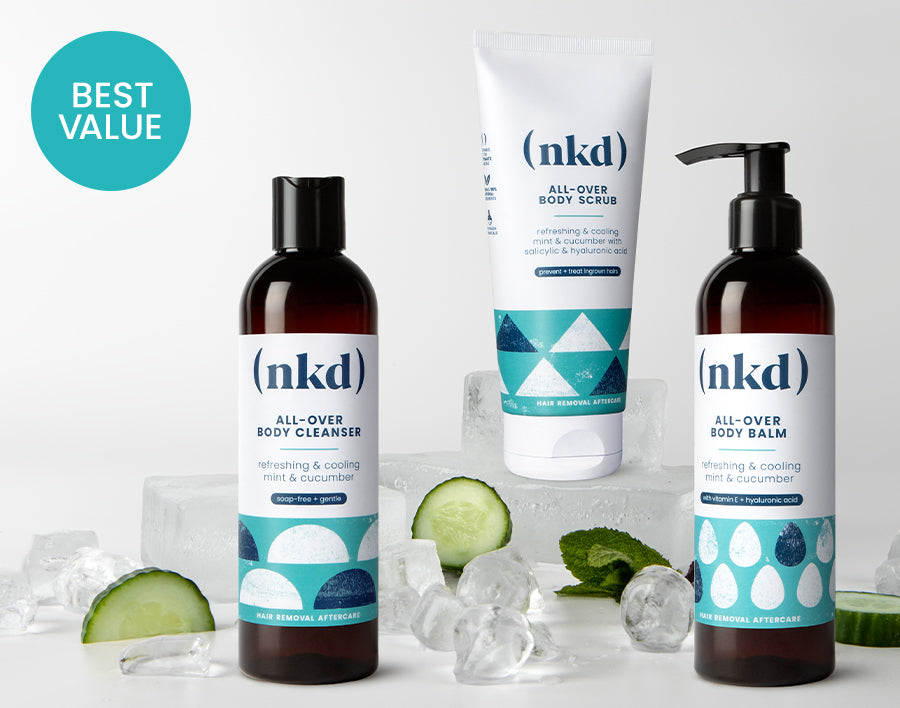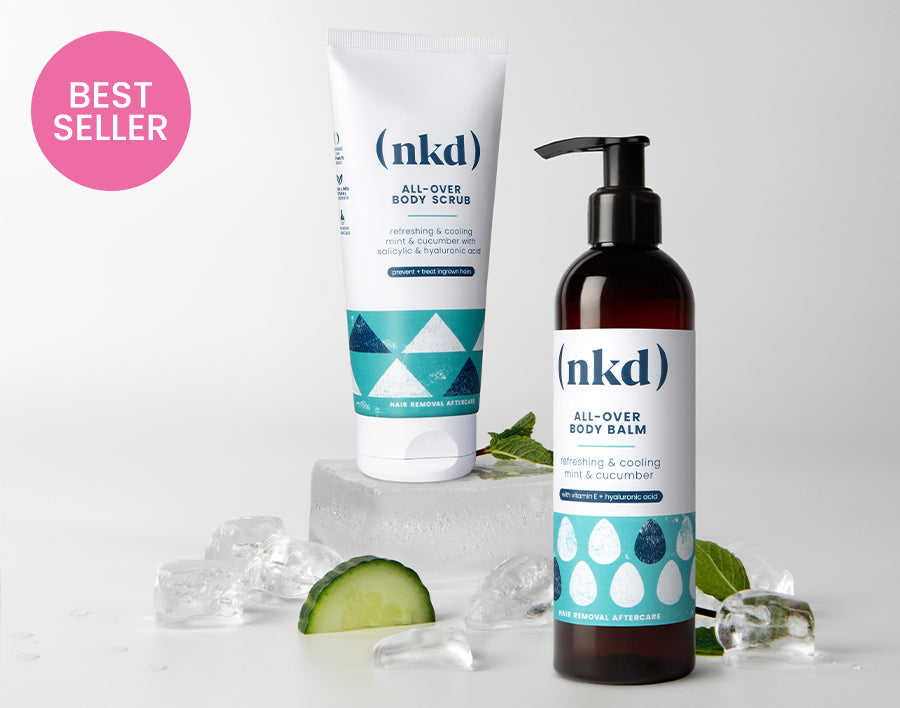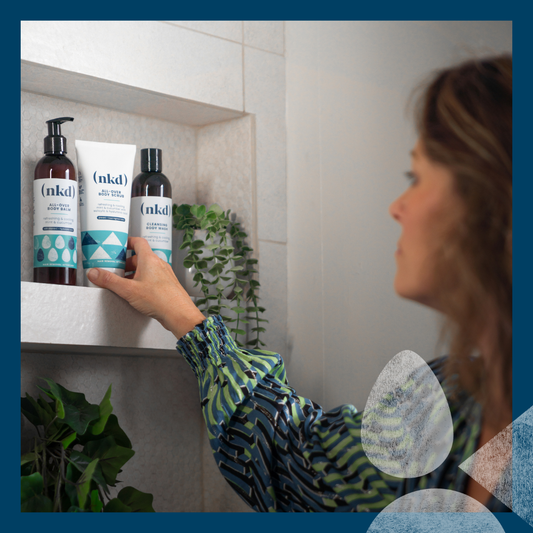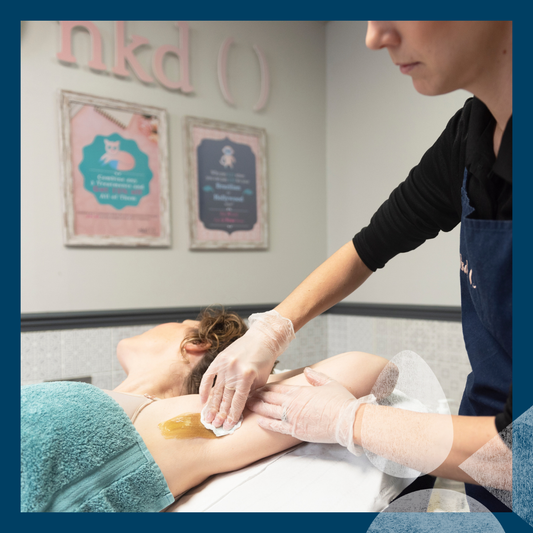If you’ve recently had a wax or are planning to experiment with waxing any time soon, you need to understand that following a post-waxing aftercare routine is crucial for maintaining healthy, soft, silky smooth skin. When carried out well with expert waxing techniques and high quality waxing products, waxing can give you amazing results. By taking additional steps at home after your treatment will get you even better results. In this guide, we’ll walk you through everything you need to know about post-waxing care, including common pain points and how to address them.
Table of Contents
Essential Guide to Waxing and Waxing Aftercare
Waxing is an effective method for achieving soft, smooth, hair-free skin. However, when not done properly or with insufficient aftercare—especially with certain skin and hair types—it can result in temporary side effects such as redness, irritation, and ingrown hairs. These issues can be minimised and often eliminated with proper aftercare. Whether it’s your first wax or you’re a seasoned pro, following these tips will ensure your waxing experience is much more effective in the long run.

What to Expect
It's normal to experience some slight soreness, redness, or small bumps after your waxing session, especially if it's your first time. These are temporary reactions and should fade within 24-48 hours. However, if the redness or irritation persists, it's important to reach out to a professional for advice.
To ensure your skin heals properly and stays smooth after waxing, it's important to take extra care during the first 24-48 hours.
The First 48 Hours After Waxing: Essential Care Tips

Keep the waxed area clean and avoid heat and friction during the next 24-48 hours. Here are the key guidelines to follow
- Keep it cool: Avoid hot baths or showers. Stick to lukewarm or cool water to prevent irritation.
- Steer clear of saunas and hot tubs: These can cause your pores to open further and increase the risk of infection.
- No tanning: Avoid sunbathing, sunbeds, or using fake tans as freshly waxed skin is more sensitive to UV exposure.
- Avoid strenuous activity: Hold off on intense workouts, sports, or exercises that could cause sweating and friction on the treated area.
- Hands off: Refrain from scratching or touching the waxed area with dirty hands to prevent irritation or infection.
- Loose, breathable clothing: Opt for clean, loose-fitting clothes to allow your skin to breathe and reduce friction on the treated area.
- Skip the pool: Avoid swimming in chlorinated pools to protect the delicate skin from bacteria and chemicals.
- Be mindful of products: Do not apply deodorants, body sprays, powders, lotions, or other products unless specifically recommended by your therapist.
By following these simple steps, you can help ensure a smooth, irritation-free healing process, leaving your skin soft and glowing for longer.
If you're interested and want to learn more, please read more details below where you'll find the essential waxing aftercare guide, step by step.
Common Post-Waxing Concerns and How to Manage Them

Redness & Irritation
It’s not unusual to experience some redness or irritation after waxing, given that the waxing process strips away the top layer of skin, leaving it more vulnerable to external factors. This is especially the case if you have sensitive skin, it’s your first time waxing (and especially if you have shaved a lot in the past), or if your hair is particularly thick, coarse or curly. Whereas a lot of people, either with less sensitive skin, those who are used to waxing, and those do not have particularly thick coarse or curly hair can experience no side effects whatsoever.
- Why It’s Happened to Me: Waxing removes hair from the root and strips away the top layer of skin, leaving the area more vulnerable.
- Am I Affected?: If you have sensitive skin, it's your first time waxing, or you have thicker, coarser, or curly hair, you're more likely to experience noticeable redness and irritation.
-
How I Can Manage It Myself:
- Apply a cooling gel or aloe vera to soothe the skin.
- Avoid touching the treated area with dirty hands.
- Keep the skin moisturised with a gentle, fragrance-free lotion.
- Avoid heat or friction for the first 24-48 hours.
Ingrown Hairs
Ingrown hairs happen when hair grows back under the skin or sideways, causing bumps and irritation. This is common in areas where the skin is more sensitive and the hair is thicker, coarser and curlier, such as the bikini line.While not waxing related, ingrown hairs can also affect a lot of men’s beardlines after shaving, especially with afro-caribbean hair types.
- Why It’s Happened to Me: Ingrown hairs occur when hair grows back under the skin or sideways, causing it to get trapped and irritated. This is more common in areas with thicker or curly hair.
- Am I Affected?: Areas like the bikini line and underarms are prone to ingrown hairs. If your hair is coarse or curly, you're also more likely to experience this.
-
How I Can Manage It Myself:
- Exfoliate the area regularly with a gentle scrub or exfoliating mitt after the initial redness has subsided (usually 48 hours post-wax).
- Use an ingrown hair serum to prevent hair from growing back under the skin.
- Avoid tight clothing that can cause friction and irritation.
Bumps & Folliculitis
After waxing, some people may notice small bumps or tiny pimples. This condition, known as folliculitis, can occur if the hair follicles become infected.
- Why It’s Happened to Me: After waxing, the hair follicles may become infected, leading to small, red bumps or pimples. This is often caused by bacteria entering the open follicles.
- Am I Affected?: This can affect anyone, but it’s more likely if proper aftercare isn’t followed or if your skin is prone to infections.
-
How I Can Manage It Myself:
- Apply an antiseptic cream to the treated area to help prevent infection.
- Avoid touching the waxed area with unwashed hands to reduce the risk of bacterial infection.
- If the bumps persist or worsen, consult a dermatologist for appropriate treatment.
Sunburn & Hyperpigmentation
Waxed skin can be more sensitive to the sun and may burn more easily. Without adequate sun protection, the skin can also develop dark spots or pigmentation.
- Why It’s Happened to Me: Waxed skin is more sensitive to the sun, and without proper protection, it can burn more easily. This can also cause hyperpigmentation or dark spots in the treated areas.
- Am I Affected?: People with fair or sensitive skin are more likely to develop sunburn or pigmentation after waxing.
-
How I Can Manage It Myself:
- Always apply a broad-spectrum sunscreen (SPF 30 or higher) to the treated area when going outdoors, even if it’s cloudy.
- Avoid direct sun exposure for at least 48 hours after waxing.
- Wear protective clothing like hats or cover-ups if possible.
- If pigmentation occurs, use a brightening serum or consult a dermatologist for advice.
Few Common Waxing Aftercare FAQ
What should you not do after a wax?
After waxing, you should avoid hot showers, saunas, tight clothing, and any heavy physical activity for the first 24 to 48 hours. These can irritate your freshly waxed skin, causing redness, bumps, or ingrown hairs. Avoid scratching the area and don’t expose your skin to direct sunlight or tanning beds immediately after waxing.
How do you take care of after waxing?
After waxing, it’s essential to keep the area clean and moisturised. Use a gentle, fragrance-free moisturiser to soothe your skin. Avoid harsh chemicals and exfoliating for at least 48 hours. Keep your skin cool and protected from direct sun exposure. Wearing loose, breathable clothing helps reduce friction on the skin.
What do you put on your skin after waxing?
After waxing, it's best to apply a moisturiser or after-wax lotion that’s gentle and soothing. Look for products that contain calming ingredients like aloe vera or vitamin E to reduce irritation and keep the skin hydrated.
Can I apply aloe vera after waxing?
Yes, aloe vera is an excellent option for soothing your skin after waxing. It has natural anti-inflammatory properties that help calm redness, reduce irritation, and promote healing. Apply a small amount to the treated area for relief.
What to put on underarms after waxing?
For underarms, you should apply a soothing lotion or aloe vera gel. Avoid deodorants with alcohol or fragrances for at least 24 hours, as they can irritate your freshly waxed skin. Let your underarms breathe by wearing loose, comfortable clothing to prevent friction.
Essential Steps for Post-Waxing Care
Apply a Post-Wax Lotion or Moisturiser
After-wax lotions, gels and moisturisers applied immediately after your wax help soothe and cool the skin, reducing inflammation and redness. Look for products containing naturally antibacterial, antiinflammatory and antimicrobrial properties, most notably tea tree oil. Ingredients such as benzoin, aloe vera and Vitamin E can also be effective and are known for their calming and soothing properties.

- Use lotions, gels, or moisturisers right after waxing to soothe and cool the skin.
- Look for products with antibacterial, anti-inflammatory, and antimicrobial properties, such as tea tree oil.
- Aloe vera, benzoin, and Vitamin E are also effective in calming and soothing the skin.
Wear Loose, Comfortable Clothing
Your skin should be able to breathe post waxing. Wear loose-fitting clothes made of natural fabrics like cotton, which allow air circulation and minimise irritation. Tight clothing can cause friction, leading to further redness and bumps, especially in sensitive areas like the bikini line.

- Choose loose-fitting clothes made of natural fabrics like cotton to help your skin breathe.
- Loose clothing allows air circulation and reduces irritation.
- Avoid tight clothing that can cause friction, especially in sensitive areas like the bikini line.
Moisturise Regularly
Regular moisturising of the waxed area throughout the month will keep your skin hydrated, soft and supple and will help prevent any ingrown hairs. Dry, flaky skin which is difficult for new hair to break through, is a common cause of ingrown hairs. Choose a gentle moisturiser that is free of harsh chemicals, fragrances, or dyes to avoid irritating your skin.
- Keep your skin hydrated, soft, and supple by moisturising regularly.
- Moisturising helps prevent dry, flaky skin, which can lead to ingrown hairs.
- Use a gentle, fragrance-free moisturiser without harsh chemicals or dyes.
Exfoliate After 48 Hours
Once any initial redness has subsided, gently exfoliate the waxed area to prevent ingrown hairs. Regular exfoliation throughout the month is the best thing you can do to keep ingrown hairs at bay and make your skin as best prepared for its next wax as possible. If exfoliating the bikini or pubic area, you must use a suitable exfoliating body scrub for this delicate area.
- Wait until the initial redness subsides, then exfoliate gently to prevent ingrown hairs.
- Regular exfoliation throughout the month helps keep ingrown hairs at bay.
- Use a suitable exfoliating scrub for delicate areas like the bikini line.
Recommended: Gentle Exfoliating Scrubs with Salicylic Acid
Essential Post-Waxing Care: Key Don'ts for Smooth, Irritation-Free Skin
-
- Don’t touch or scratch the treated skin with dirty hands to prevent infections.
- Avoid oils, body butters, or scented lotions for 24 hours to prevent clogging pores and irritation.
- Stay out of the sun for 48 hours and apply sunscreen to protect the sensitive skin
- Avoid swimming in chlorinated pools or hot tubs for 48 hours to prevent bacteria entering open pores.
- Avoid intense exercise and sweating for 24 hours to reduce friction and irritation.
- Wait 48-72 hours before scheduling treatments like chemical peels to avoid over-sensitising the skin.
Avoid Touching the Waxed Area
Why Should You Avoid Touching the Waxed Area?
Resist the urge to touch or scratch your freshly waxed skin. Touching the area with dirty hands can introduce bacteria, leading to potential infections and irritation.
No Oily or Scented Products Immediately
Why Should You Avoid Oily or Scented Products Immediately?
Avoid applying oily products, body butters, or heavily scented lotions on your skin immediately after waxing. These can clog pores and lead to breakouts, especially when the pores are still open. Wait at least 24 hours before applying any products that contain fragrances or chemicals.
Avoid applying oily products, body butters, or heavily scented lotions on your skin immediately after waxing. These can clog pores and lead to breakouts, especially when the pores are still open. Wait at least 24 hours before applying any products that contain fragrances or chemicals.
Avoid Sun Exposure
Why Should You Avoid Sun Exposure After Waxing?
Waxed skin can be more sensitive, and exposing it to the sun can cause burns or hyperpigmentation. Wait at least 48 hours before sunbathing, and always wear a broad-spectrum sunscreen when outdoors. If possible, wear protective clothing to avoid direct sun contact.
Stay Away from Swimming Pools & Hot Tubs
Why Should You Stay Away from Swimming Pools & Hot Tubs?
After waxing, your pores are still open and susceptible to bacteria. Chlorine in pools or bacteria in hot tubs can irritate the skin and lead to infections. It’s best to avoid swimming for at least 48 hours.
Skip the Gym & Intense Physical Activity
Why Should You Skip the Gym & Intense Physical Activity?
Sweating and friction from physical activity can irritate freshly waxed skin, especially in sensitive areas like the bikini line. It’s best to avoid intense workouts or activities that may cause sweating for at least 24 hours.
Do Not Schedule Other Skin Treatments
Why Should You Avoid Scheduling Other Skin Treatments After Waxing?
Waxing already removes the top layer of skin. Avoid scheduling other skin treatments, such as chemical peels or microdermabrasion, within 48-72 hours of waxing. These treatments can over-sensitise the skin and increase the risk of irritation or damage.
Long-Term Waxing Aftercare Tips
-
- Exfoliate 2-3 times a week to prevent ingrown hairs and keep skin smooth, especially in areas like the bikini line and underarms.
- Regularly hydrate and moisturise your skin to maintain elasticity and softness.
- Schedule waxing sessions every 4-6 weeks to ensure hair grows in cycles, making the process more effective and comfortable
Exfoliate to Prevent Ingrown Hairs and Maintain Smooth Skin
Consistent exfoliation (two to three times a week) helps prevent ingrown hairs and keeps the skin smooth. This is particularly important for areas prone to hair regrowth, such as the bikini line and underarms.
Hydrate and Moisturise for Soft, Supple Skin
Continuing to hydrate and moisturise your skin on a regular basis helps maintain its elasticity and keeps it soft.
Maintain Results with Regular Waxing Appointments
For the best results, schedule waxing sessions every 4-6 weeks. This ensures your hair grows in cycles, making the process more efficient and comfortable.
Proper post-waxing care is key to achieving the best results from your waxing treatments. By following the hints and tips outlined in this guide, you can minimise irritation, prevent ingrown hairs, and keep your skin looking smooth and healthy all year round. Remember, every person’s skin and hair type is different, so it’s important to pay attention to how your skin reacts after waxing and adjust your aftercare routine accordingly.
Feel free to share this guide with anyone who’s looking for waxing aftercare tips, and let us know if you have any other questions or tips that you find helpful!
Long-Term Waxing Aftercare FAQ
Does waxing have long term side effects?
What happens after years of waxing?
Over time, waxing can cause some hair follicles to stop growing hair altogether, leading to sparser hair growth. This process happens at different rates for everyone.
Does waxing damage skin over time?
Waxing can be harsh on the skin, as it removes hair that helps protect certain areas of the body. Over time, waxing can slow down hair regrowth and make it finer, but it can also irritate the skin’s surface.
What happens if you wax for a long time?
With regular waxing, your hair will become finer, softer, and grow back slower. Over time, you’ll be able to space out your waxing sessions, and in some cases, the hair may stop growing in certain areas, leaving your skin smoother for longer.
Is waxing bad for your skin long term?
Waxing can irritate your skin, causing redness and sensitivity. Over time, it may make your skin more prone to infections or, in rare cases, bleeding, especially in areas with previous damage.


